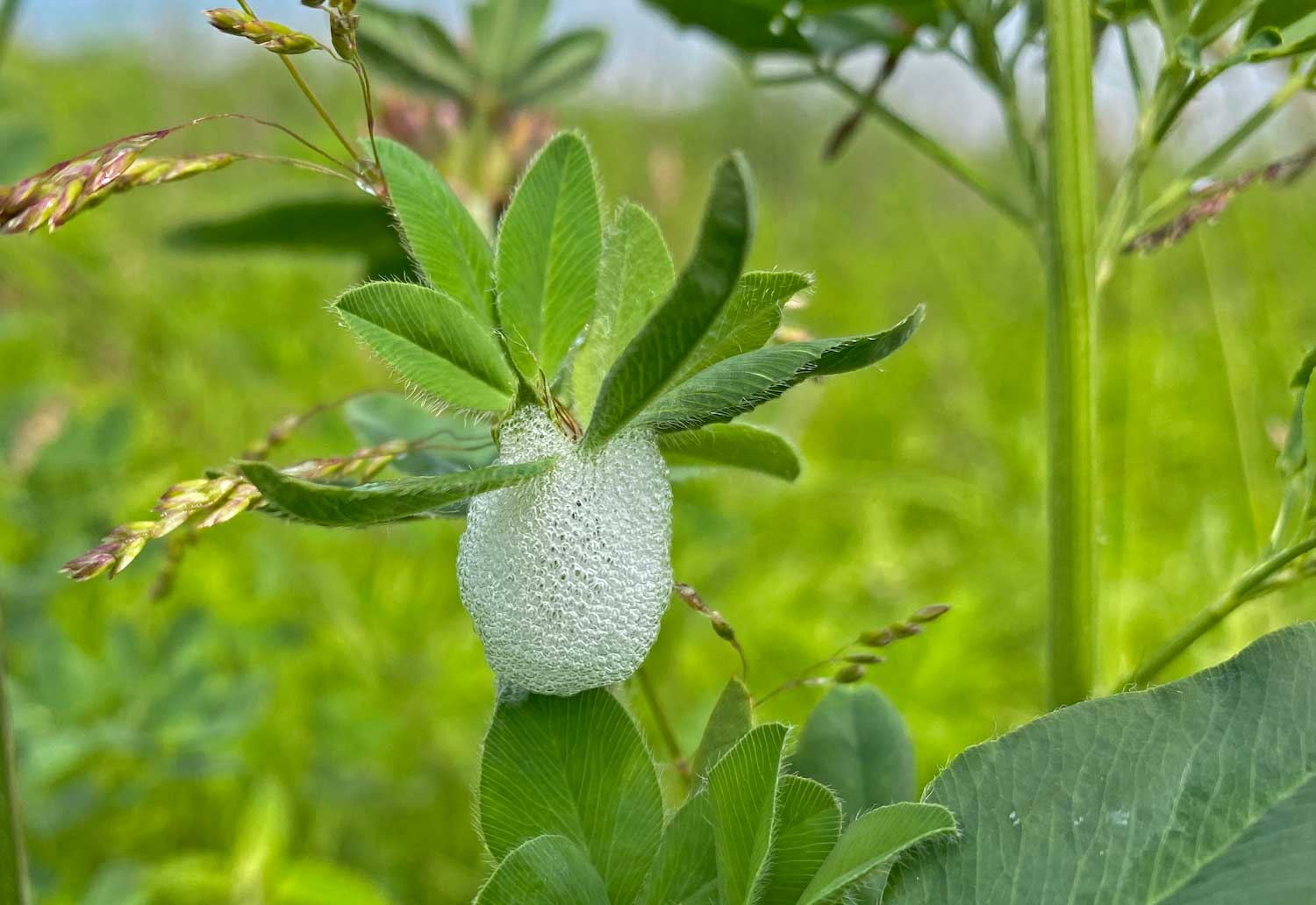That's not spit: Spittlebug nymphs make their homes in frothy bubbles

Those spitlike globs you might sometimes see on plants in the preserves and elsewhere aren't the remnants of someone's rude gesture. Instead, those frothy bubbles serve as a safe home for appropriately named spittlebugs, a type of insect also called froghoppers.
Immature spittlebugs in their nymph stage surround themselves with this spitlike substance for a few reasons. It helps protect them from potential predators, it keeps them safe from extreme temperatures and it also prevents them from drying out, according to the University of Wisconsin Division of Extension.
The so-called spit isn't spit at all. It mostly consists of plant sap combined with substances the spittlebugs secrete from their glands, according to the Missouri Department of Conservation. They are able to create the substance by drawing air into their abdomens and mixing the air with the plant fluid and other secretions, then expelling it out of their anuses. They move their abdomens up and down as the bubbles are being excreted so they can surround themselves with the protective coating.
The sap also provides the spittlebug nymphs with nutrition, but it doesn't have a lot of nutritional value, so they take in a lot of it to sustain themselves and make their frothy bubbles. They drink about 200 times their body weight in plant sap every day, which would be the equivalent of a 150-pound person drinking more than 3,500 gallons of water in a single day, Montana Public Radio reports.
While they are in their spit bubbles, the nymphs feed on the plant sap and matter and grow, molting their exoskeletons several times as they do, the Missouri conservation department reports. After a final molt, they emerge from the bubbles as mature adults.
As adults, froghoppers (aka, spittlebugs) look similar to leafhoppers. They eat the same plant sap they ate as nymphs. There are more than 30 species that live in North America, but most are brown, tan or gray, and although they have wings, they only rarely fly, the University of Wisconsin extension reports. What they can do is hop, like their namesake frogs can.
Their impressive jumping ability is useful to froghoppers because it is their primary means of escaping from predators. They are able to jump as far as 100 times their body length, thanks to structures on their hind legs that work like catapults, NBC News reports.
The adults end their life cycle by laying eggs in plant stems. The eggs will overwinter there, then the nymphs hatch in the spring, creating those recognizable spit bubbles in grasses and plants.
If you find the "spit" of a spittlebug, you can probably find the critter inside. Gently wipe the bubbles away and look for the tiny bug inside. They are usually pale green, yellow or tan, and they won't have wings, the Missouri Department of Conservation reports. Once you've gotten a good look, gently replace the bubbles around the nymph so they continue to offer protection until they are ready to emerge.
Spittlebug nymphs generally do not harm the plants where they set up their bubbly residences, but their feeding activity can sometimes damage garden plants, the Missouri Department of Conservation reports.
